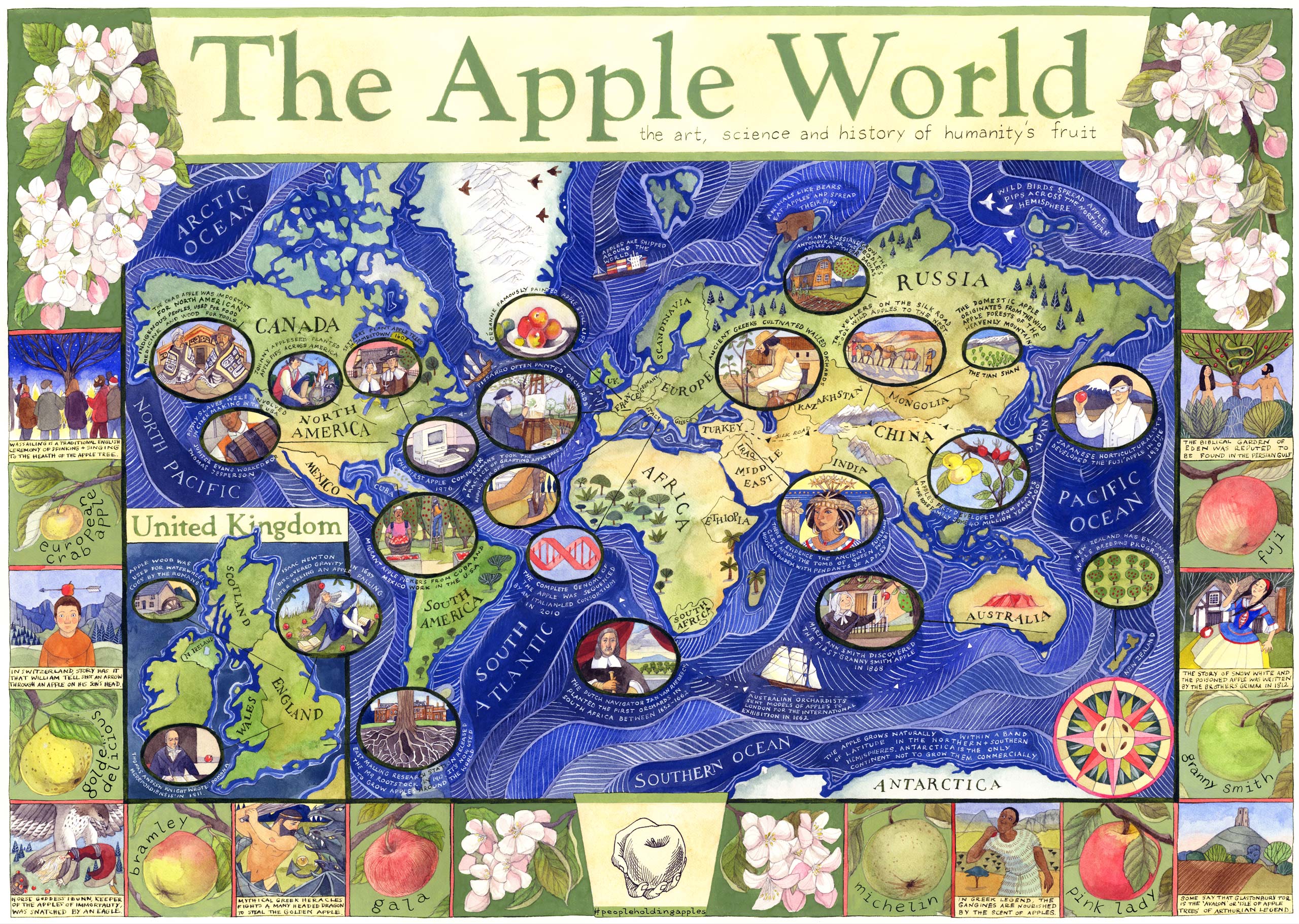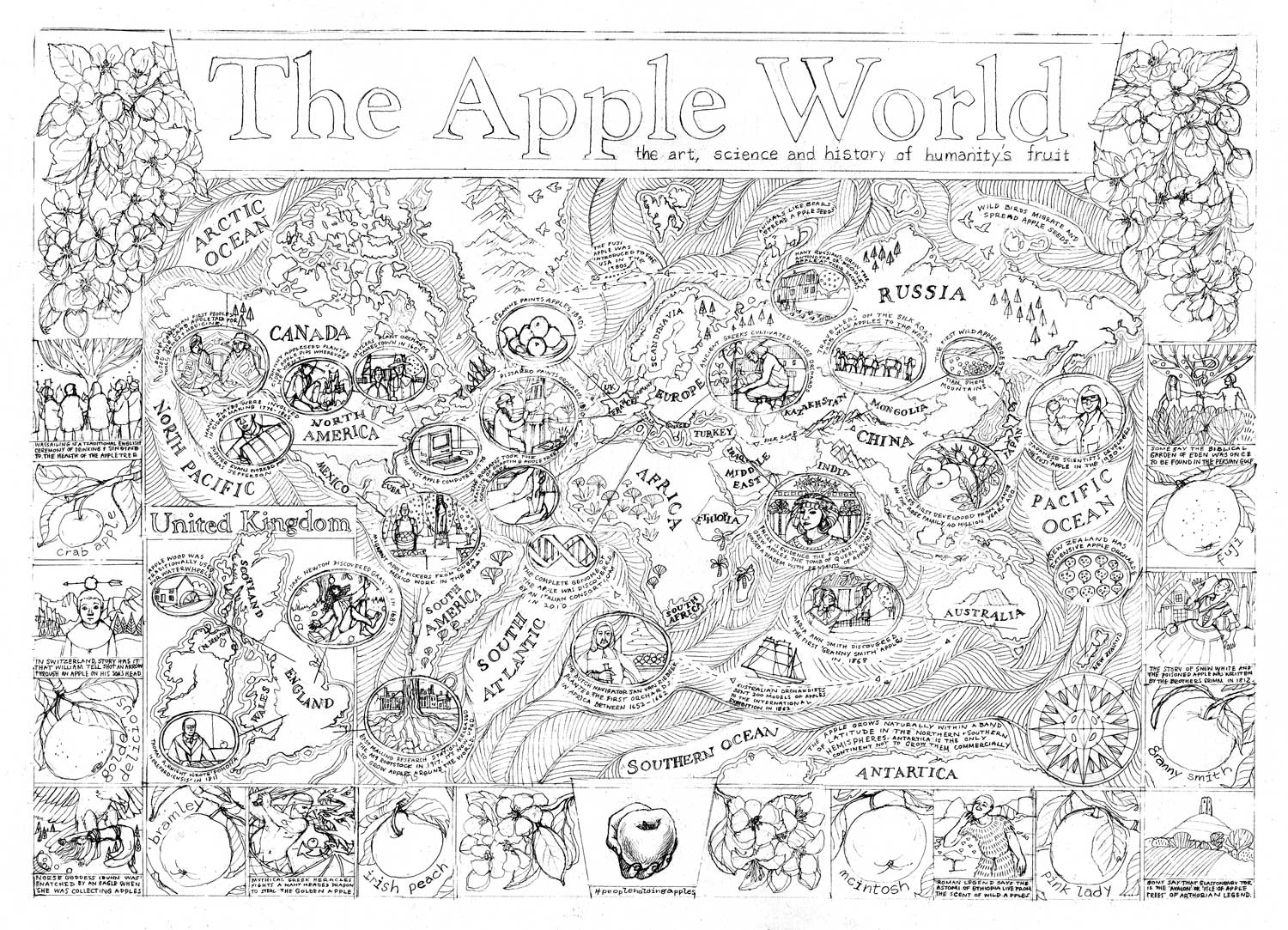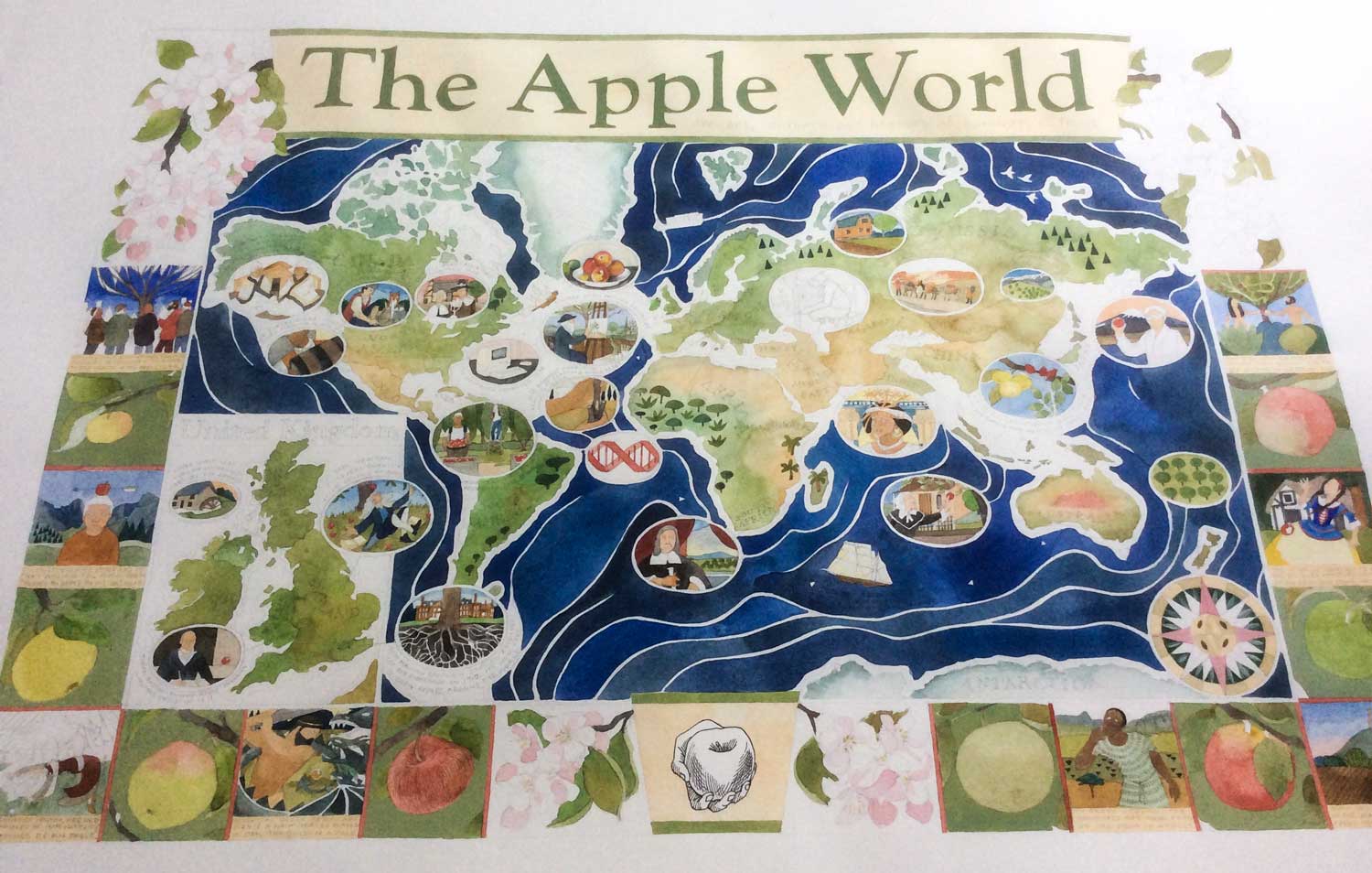It has been an absolute pleasure to work on this joint commission from the Museum of Cider, the Brightspace Foundation, and the National Trust in Herefordshire – ‘The Apple World’, a map of the history of the apple and how science, culture, colonisation, travel and trade are inextricably linked with it. Like all cartographers of the past, I considered what my patrons wanted to convey through the map before I put paintbrush to paper. There was a long list of stories and apple details to include and time was spent working out the best way to organise all the information and display it clearly.
The first wild apple forests were actually found high in the Tian Shan, sometimes known as the Heavenly Mountains, of Kazakhstan. Weary travellers took those apples for food and to trade along the Silk Routes as far as the Middle East and Europe. Here, ancient Sumerians, Romans, Greeks and Persians began to cultivate them – building orchards, tending saplings and spreading the practice of grafting.
The ages of European colonisation and exploration took the apple further – to the African, Australian and American continents. Russia, China and Japan developed their own apple varieties; the ‘Antonovka’ apple, much beloved of dacha owners in Russia and the ‘Fuji’, developed by Japanese horticulturalists in the 1930s for example… As the world industrialised and travel became easier, different apple varieties were spread around the world and trading apples became big business. Now, many of these countries export globally, some to their original colonisers.







